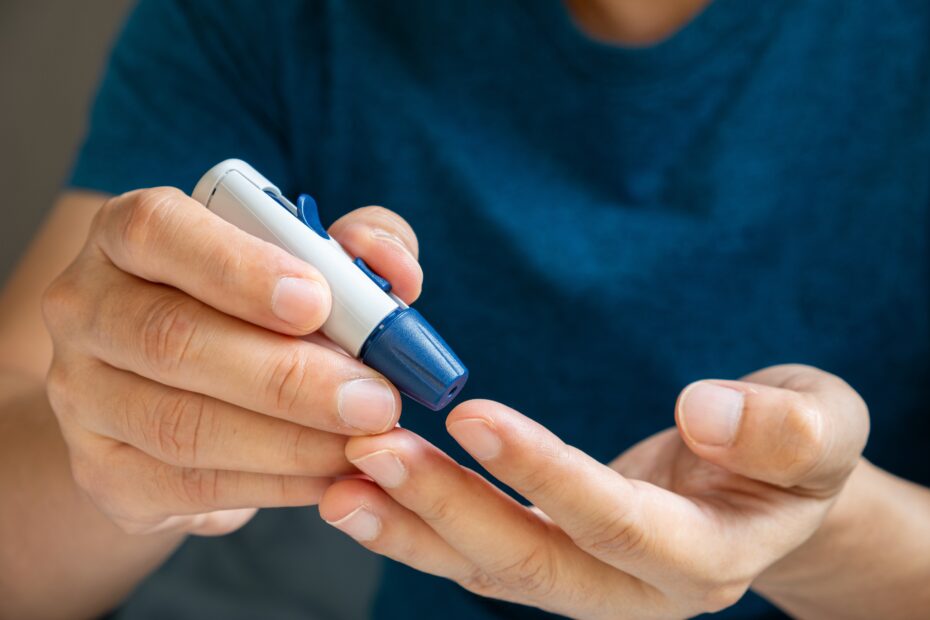Diabetes increases the risk of phimosis
Diabetes increases the risk of phimosis in boys and men. This is partly because diabetes over time may affect the blood supply to the small blood vessels in the body. Diabetes patients with poorly regulated blood sugar levels may also experience frequent yeast infections. Problems with the blood supply to the small blood vessels may also affect the blood flow to the rest of the penis and to small blood vessels in, for example, fingers, toes, and eyes.
Treatment of phimosis in diabetes patients
Phimosis in diabetes patients may be an early sign that the blood supply to the small blood vessels is reduced. There are often also symptoms such as slow healing of wounds and other injuries, reduced blood flow to fingers and toes, erectile problems, etc.
If you have diabetes and phimosis, there are several effective treatment options:
Ensure good diabetes management
First and foremost, your diabetes must be brought under control. A balanced approach to healthy eating, exercise, and, if necessary, medication is essential. Seek assistance from your doctor or request a referral to a specialist if managing your diabetes proves difficult. When diabetes is well controlled, blood supply to the small blood vessels improves, and there is less sugar in the urine. This may help alleviate foreskin problems and, in some cases, resolve them entirely.
Hormone cream
Phimosis can often be successfully treated with hormone cream in combination with stretching. The cream contains corticosteroids, which soften the skin and stimulate cell growth. When diabetes is well controlled and the cream is used alongside properly performed stretching techniques, there is a good chance of avoiding foreskin-preserving surgery or circumcision.
Foreskin stretching
Phimosis can, in most cases, be successfully treated with a combination of hormone cream and foreskin stretching. There are several different methods available for stretching the foreskin.
Foreskin-preserving surgery
Foreskin-preserving surgery is sometimes referred to as “sleeve circumcision” or “partial circumcision.” This procedure involves carefully creating a larger opening in the foreskin, making it easier to retract over the glans penis. It is important to note that the foreskin and penis may struggle to heal if your diabetes is not well controlled.
Circumcision
Circumcision may become necessary if good diabetes management, in combination with hormone cream and stretching, is not effective. During circumcision, the entire foreskin is removed. Since most of the sensitive nerve endings in the penis are located in the foreskin, circumcision can lead to reduced sensitivity. Be aware that the circumcision site may struggle to heal if your diabetes is not well controlled.
Strækmetoder
På denne hjemmeside er der en række forslag til gode metoder til forhudsstræk. Husk, at det kræver en daglig grundig strækrutine, hvis du vil have succes med behandlingen.
Sign up for Intact Denmark’s newsletter if you would like to learn more about sexual health, foreskin surgery, circumcision, and bodily rights. You can unsubscribe at any time.
(So far, the newsletter is exclusively in Danish.)
Get to know more
At the Knowledge Centre for Diabetes, you can find more information about diabetes and phimosis. The site is a great resource for exploring topics related to diabetes, sexuality, and penile issues. This link leads to the subpage on Sexuality and Men with Type 2 Diabetes.
Consult with your medical doctor
Diagnosis and treatment of diabetes and phimosis is best dealt with by healthcare professionals; therefore, you should always consult with your medical doctor if you experience symptoms of diabetes and phimosis. The sooner you address the issues, the better the results you will achieve.
Did you find the article helpful? If so, please consider supporting Intact Denmark. We are a small voluntary association, and your donation makes a significant difference to us.
For years
Det har i mange år været forestillingen, at drenges forhud altid skal kunne trækkes tilbage ved 6-7 års alderen, men nyere forskning viser, at denne forestilling er forældet.
For 97% af alle drenge vil forhuden kunne trækkes tilbage, når de når 16-års alderen.


